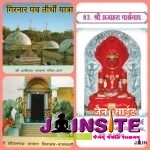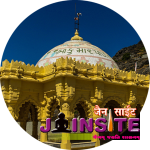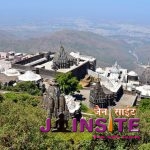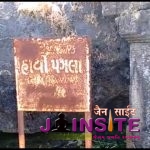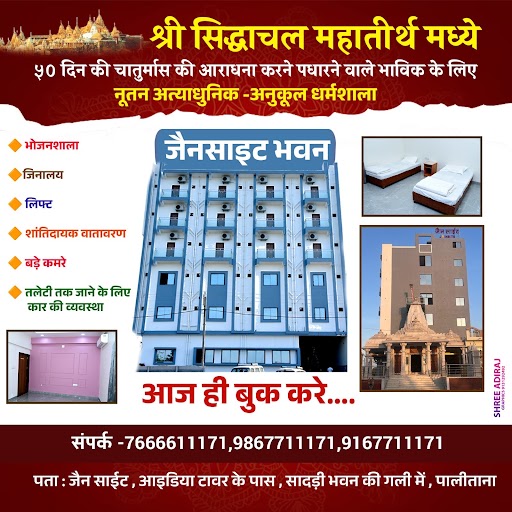In 1889 AD, the steps from Taleti to Mali Parab (facility where water is served) were completely broken. The steps from Mali Parab to Main Lord Neminath Toonk that were made of white and ash coloured stones too had worn off completely. And to add to the misery, there were absolutely no steps further ahead of the Ambaji temple. At that time, the chief administrator of Junagadh was Haridas Viharidas Desai, who proposed to fund the complete restoration work from State’s reserve. But he was unable to get approval for it. As an alternative means to raise funds, he along with the then Chief Medical officer, Dr. Tribhovandas Motichand Shah, initiated Girnar Lottery. He formed a committee comprising of many different people and announced prize money of Rs. 40,000 for the first winner, Rs. 10,000 for next 2 winners, Rs. 5,000 for subsequent 4 winners, Rs. 1,000 for next 10 winners. Apart from this, he also announced a prize of Rs. 500 for 20 winners, Rs. 20 for 250 winners, Rs. 10 for 500 winners and Rs. 5 for 1000 winners. Thus, the total prize money amounted to Rs. 1,15,000.
BOOK DHARAMSHALA
This Lucky draw was organized on 8-8-1889 and after disbursing the prize money, they were left with Three and Half Lakh Rupees. This money was used for the construction of concrete steps made of black rock from Taleti to Ambaji Temple. There was a standing committee appointed which even till date looks after the restoration and maintenance of those steps.The steps from Main temple towards Sahasavan were fondly called as ‘Old Steps’. As time passed, these old steps wore off excessively and almost reached a point of extinction.
Around 1981, under the guidance and inspiration of of Param Pujya Himanshusurishwarji, who had done 3000 fasts and 11,500 Ayambil during his lifetime, the construction of a new Samavasaran temple had begun in Sahasavan. With his inspiration, the restoration work of these ‘old steps’ too was initiated. Within a span of 4 years (i.e. in 1985), this restoration work was completed at an approximate cost of Rs. 6,00,000 by the committee which was named ‘Shri Sahasavan Kalynak Bhumi Tirthoddhar Committee’.
There was a critical and an immediate need to restore and repair the temples on the first Toonk of Girnar Tirth. In those circumstances, around V.S. 1979, Param Pujya Acharya Shri Nitisurishwarji came to Girnar. Upon seeing the dilapidated condition of the temples, he had a burning desire to restore the structure to its once lost glory. Keeping this in mind, he managed to pursue people from different villages and cities to be a part of this by giving whatever contribution they could. Once sufficient amount was collected, the restoration work got started and in no time, this work was completed.
Acharya Himanshusuriji Maharajsaheb was especially involved in the various services of the Jain religious order so that he could relieve himself partly from the indebtedness he owed to the Jain order. Once, during his Yatra to Girnar, he experienced unprecedented joy upon visiting the holy places of Diksha (renunciation) and Kevalgyan (enlightenment) Kalayanaks of the 22nd Tirthankar Lord Neminath. He felt deplored on seeing the declining importance of holy places like Sahasavan at Girnar Tirth.
He contemplated for the upliftment of this site and creation of a place of worship so that significance of the place could be restored and holy foot prints of Lord Neminath could be preserved well. Upon his polite request to the establishment and with great efforts by laymen, upliftment work of Sahasavan began. This work that began under very difficult circumstances is almost accomplished. Today, a magnificent and unique Jain temple resembling the abode of Vaimanik Dev (type of demi-gods) has been created. And four-direction facing idols of Lord Neminath have been installed there which remind us of heavenly pavilion or three tiered circular divine preaching hall/assembly called Samvasaran of Lord Neminath.
This Samvasaran temple also includes delightful idols of Living Lord Neminath (“Living” in this context means that this idol was consecrated during the time of Lord Neminath himself) and his younger brother Rahanemi. Temple also includes idols of 24 Titrthankars of the next cycle and a yellow stone idol of Lord Padmanabh – the first amongst the next 24 Tirthankaras.
A conch cave (called Ratna Mangal Nirvan Gufa) has also been created on the posterior side of this temple which provides conducive environment for meditation as well as Jaap (chanting of Mantra).


